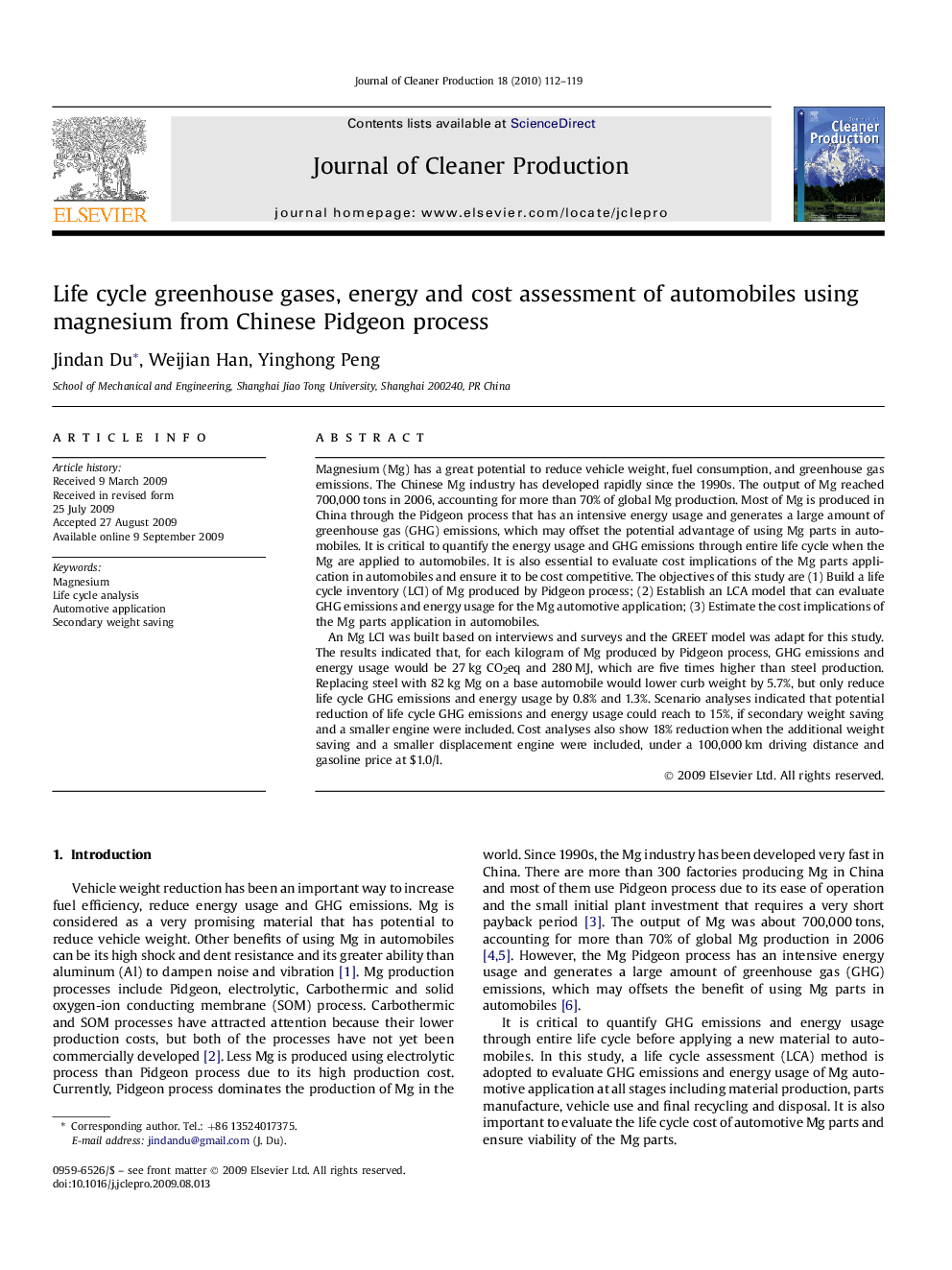| کد مقاله | کد نشریه | سال انتشار | مقاله انگلیسی | نسخه تمام متن |
|---|---|---|---|---|
| 1746392 | 1018094 | 2010 | 8 صفحه PDF | دانلود رایگان |

Magnesium (Mg) has a great potential to reduce vehicle weight, fuel consumption, and greenhouse gas emissions. The Chinese Mg industry has developed rapidly since the 1990s. The output of Mg reached 700,000 tons in 2006, accounting for more than 70% of global Mg production. Most of Mg is produced in China through the Pidgeon process that has an intensive energy usage and generates a large amount of greenhouse gas (GHG) emissions, which may offset the potential advantage of using Mg parts in automobiles. It is critical to quantify the energy usage and GHG emissions through entire life cycle when the Mg are applied to automobiles. It is also essential to evaluate cost implications of the Mg parts application in automobiles and ensure it to be cost competitive. The objectives of this study are (1) Build a life cycle inventory (LCI) of Mg produced by Pidgeon process; (2) Establish an LCA model that can evaluate GHG emissions and energy usage for the Mg automotive application; (3) Estimate the cost implications of the Mg parts application in automobiles.An Mg LCI was built based on interviews and surveys and the GREET model was adapt for this study. The results indicated that, for each kilogram of Mg produced by Pidgeon process, GHG emissions and energy usage would be 27 kg CO2eq and 280 MJ, which are five times higher than steel production. Replacing steel with 82 kg Mg on a base automobile would lower curb weight by 5.7%, but only reduce life cycle GHG emissions and energy usage by 0.8% and 1.3%. Scenario analyses indicated that potential reduction of life cycle GHG emissions and energy usage could reach to 15%, if secondary weight saving and a smaller engine were included. Cost analyses also show 18% reduction when the additional weight saving and a smaller displacement engine were included, under a 100,000 km driving distance and gasoline price at $1.0/l.
Journal: Journal of Cleaner Production - Volume 18, Issue 2, January 2010, Pages 112–119